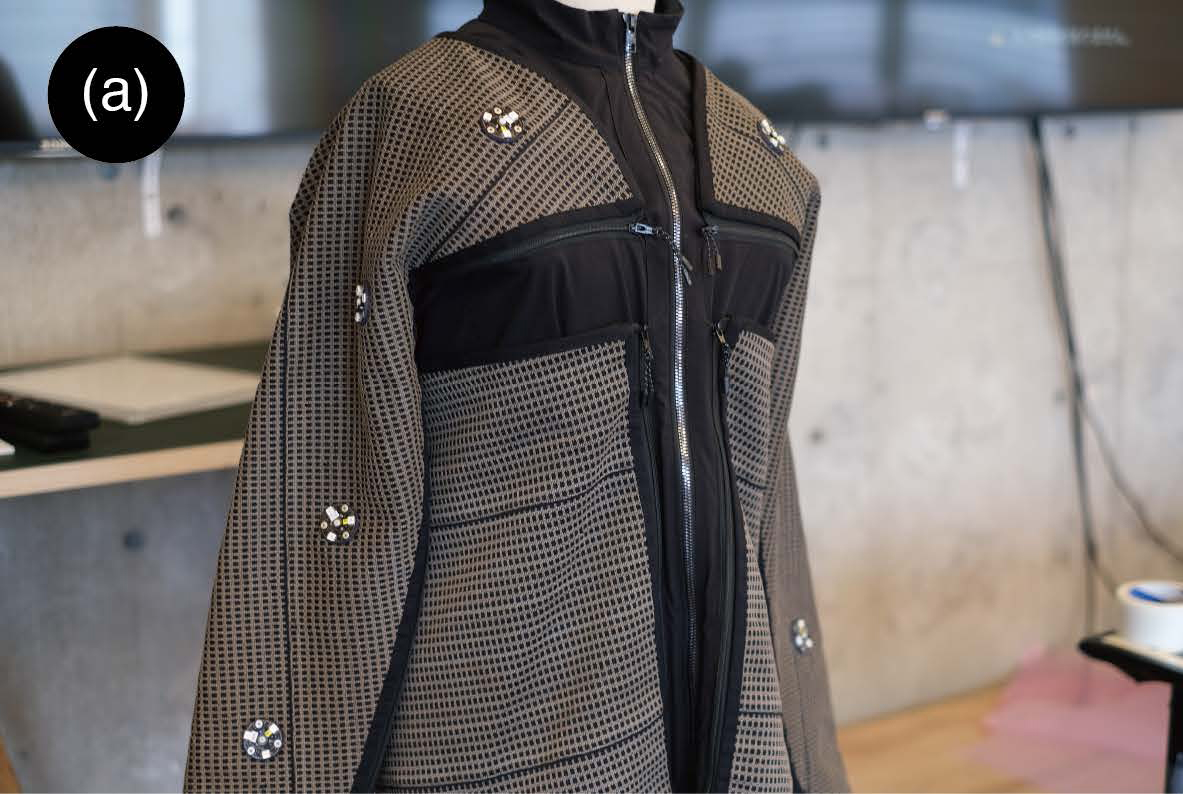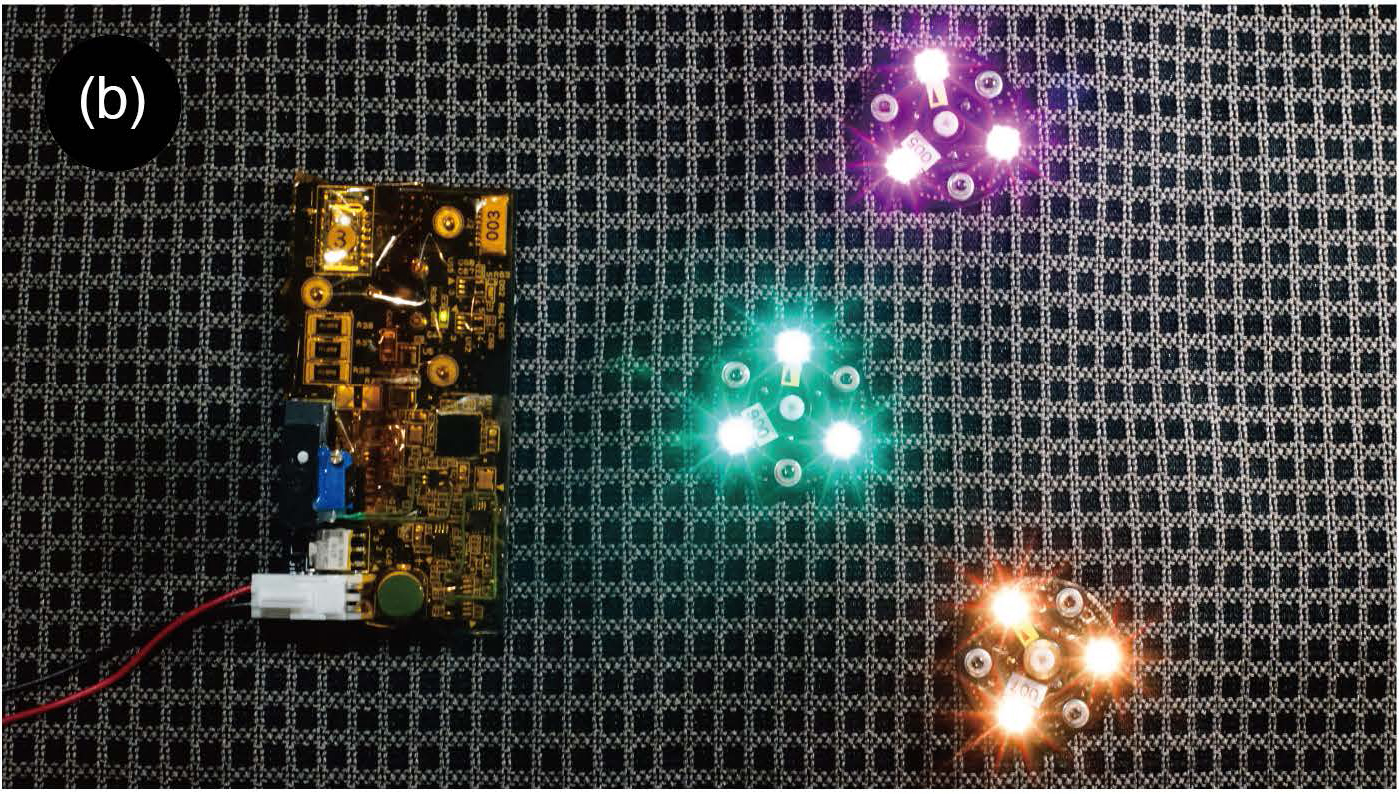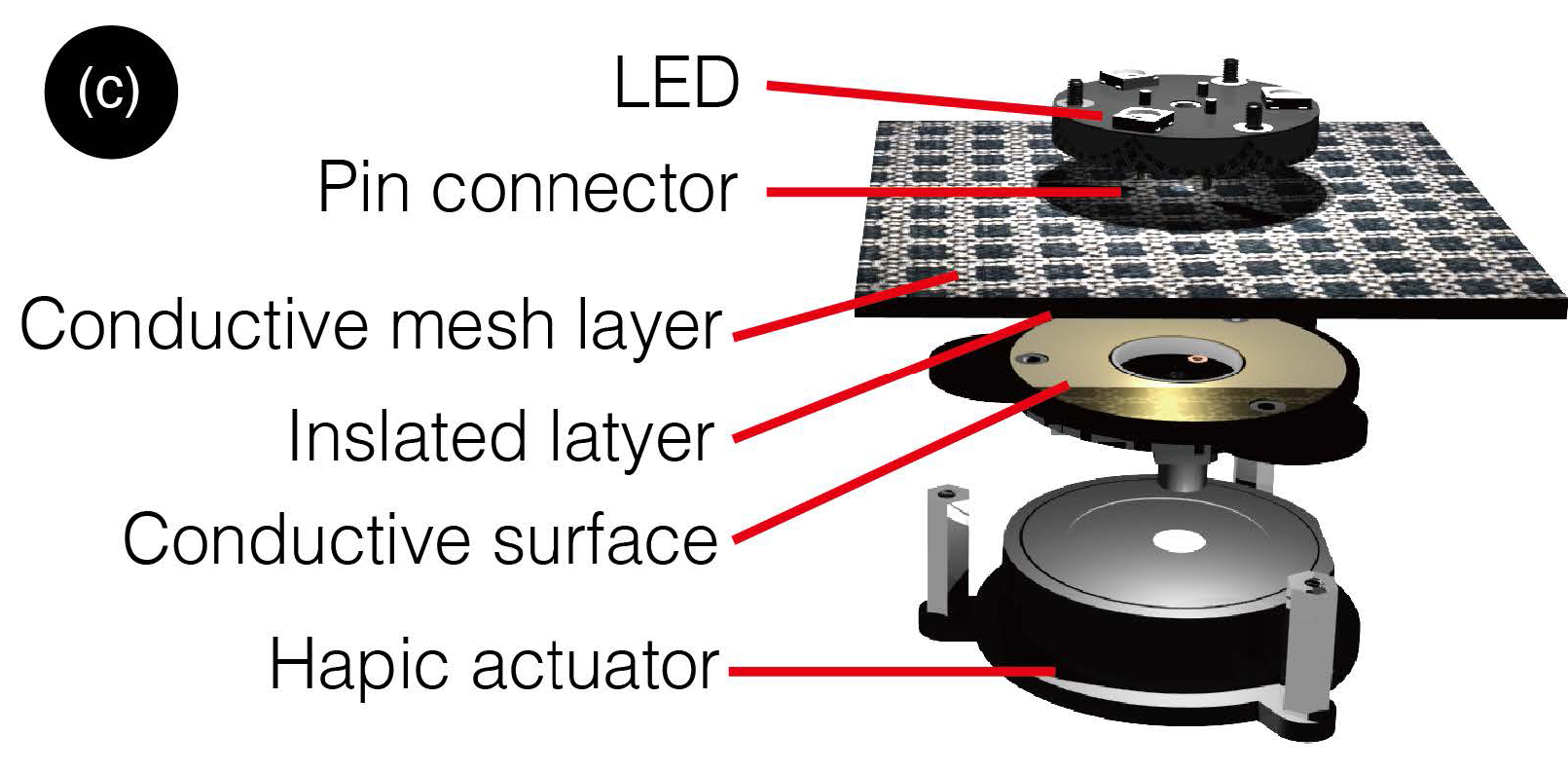“Designing A Full-Body Customizable Haptic Interface Using Two-Dimensional Signal Transmission” by Furukawa, Nii, Noda, Niwa, Hanamitsu, et al. …
Conference:
Type(s):
Entry Number: 54
Title:
- Designing A Full-Body Customizable Haptic Interface Using Two-Dimensional Signal Transmission
Presenter(s)/Author(s):
Abstract:
Introduction and Motivation
The concept of spatial computing has a high potential to augment our lives. We can imagine the expansion of the concept of spatial computing in the future as the expanded visual space will blend into our daily lives. In such a future, how do we feel and interact with another reality that overlaps with real space? We have researched this question from an approach using a haptic interface. We previously developed the Synesthesia Suit[Konishi et al. 2016]. This is a full body haptic suit that extends the VR experience of the game “Rez Infinite”. It delivers the visual and musical experience of “Rez” to the whole body, and provides haptic feedback. However, the Synesthesia Suit is difficult to walk around in a physical space, due to the thick cables required for its operation. Basically it is especially suited for VR gaming and it was difficult to apply to spatial computing experience.
We develop a new wearable interface, which applies to spatial computing experience as shown in Fig.1(a). From our previous research and knowledge, we concluded that such a new interface satisfies the following requirements: a degree of flexibility similar to that of ordinary cloth that does not affect the user’s body movement, a wireless connection that enables walking freely in space, a variation of haptic feedback, and customizable position and number of haptic feedback modules based on the sense and preference of each user. We use two-dimensional signal transmission technology to enable all of the above requirements.
References:
- Yukari Konishi, Nobuhisa Hanamitsu, Benjamin Outram, Kouta Minamizawa, Tetsuya Mizuguchi, and Ayahiko Sato. 2016. Synesthesia suit: the full body immersive experience. In ACM SIGGRAPH 2016 VR Village. ACM, 20.
- Akihito Noda and Hiroyuki Shinoda. 2018. Inter-IC for Wearables (IΘ2 We): Power and Data Transfer over Double-sided Conductive Textile. IEEE transactions on biomedical circuits and systems (2018).
Keyword(s):
Acknowledgements:
This work was partly supported by the JST ACCEL Embodied Media project (JPMJAC1404) and the JST PRESTO (JPMJPR18J7).






